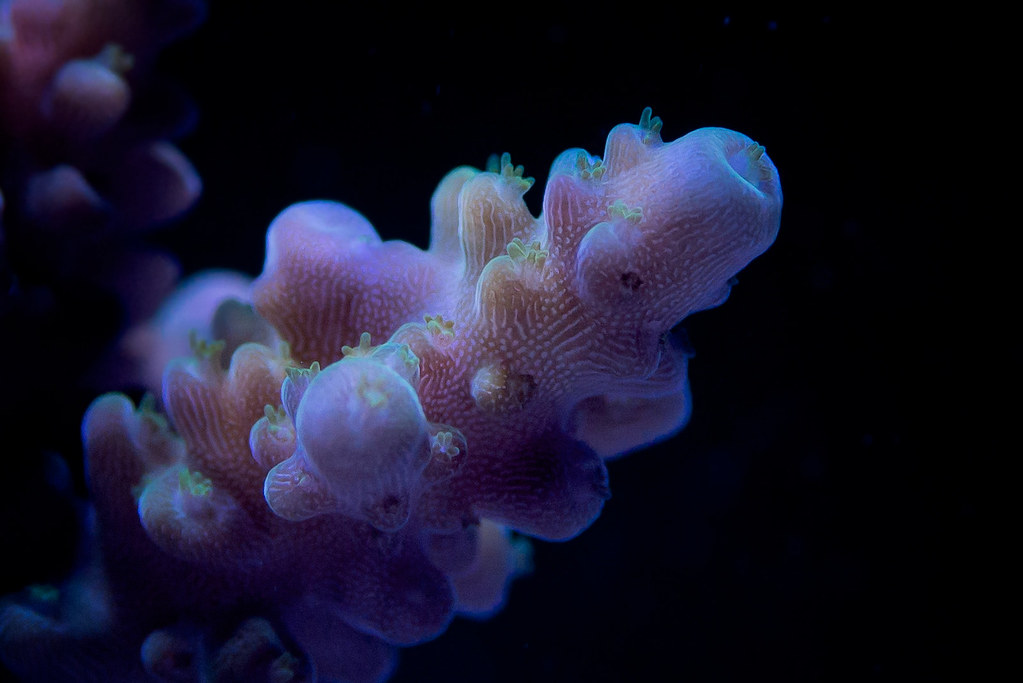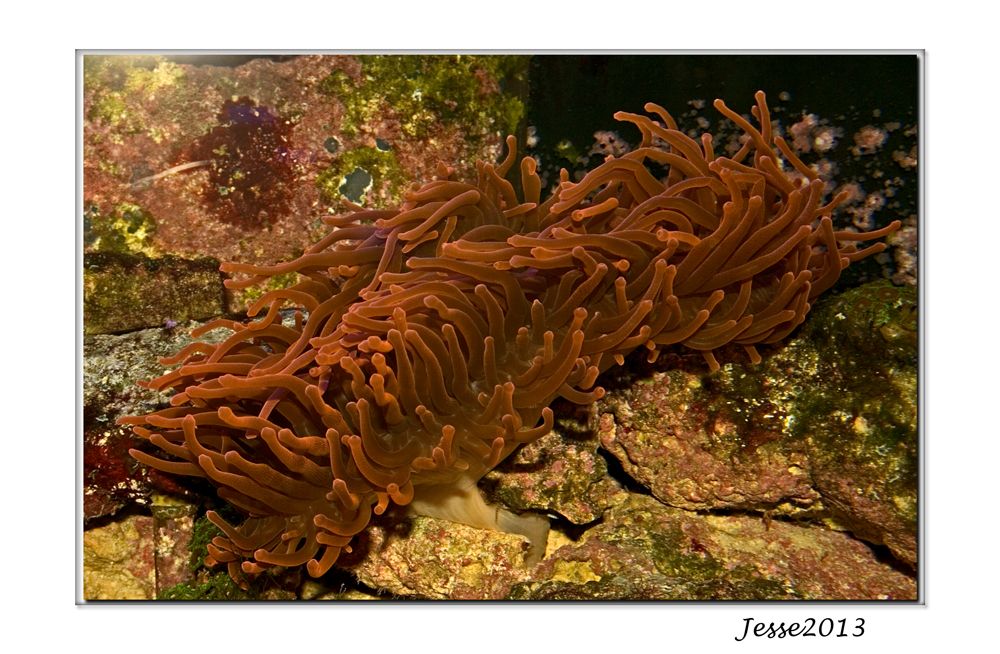marcgrantphoto
New member
If you're shooting digital, and I'm sure most of you are, white balance is extremely important part of the photo taking process to render life-like images.
We have numerous kinds of film and filters to give us the desired results when taking pictures. There were films to make images cooler, film for warmer images, film for incandescent light, film for florescent light and so on. With digital, we can just tell the camera what white is. It need to know that in order to render true to life colors. When you stick a white plastic card inside a tank full of corals and light from the ultraviolet and blue spectrum, the card becomes blue. We trick the camera with CUSTOM WB and tell it that the card is WHITE. The camera will then synchronize all colors based on the tiny bit of info.
Because blue light is the last in the light spectrum to be filtered out by water it gives the reef an overall blue appearance. Red and yellow are filtered out in the first couple of feet. Same thing happens in our tanks and if they were deep enough, and some of the larger reef tanks are, you would be able to see this. That's why the blue spectrum is so important to certain corals so when underwater photographers dive down to a reef, they have to use bright strobes for lighting the reef to expose it's "true" colors and if deep enough, to also provide extra light for proper exposure.
The blue images can be color corrected in Photoshop or with a RAW converter software that is supplied with DSLR's that shoot in RAW mode but it's much easier to fix it before you shoot and that's by custom setting the WB.
There are several options for custom setting of WB. One is the use of a product, and there are several on the market, that clips over your lens. The piece is usually a white plastic that gathers light. You take a photo with it in place and then push the SET WB button on your camera which tells the camera that the photo you just took is WHITE. Another way would be to place a saltwater safe white plastic card inside the tank so the same light is hitting it that is also falling on the reef. You take a photo of the card so that it completely fills the frame and again, press the SET WB button. The third way is to set your camera to where you can tweak the color by using the Kelvin scale, either adding or subtracting blue or yellow depending on whether you want the image to be cooler or warmer. About 99% of the photos I see on here are way too cool. On the color scale, blue cancels out yellow (cool vs. warm) and yellow cancels out blue (warm vs. cool).
I hope this explains everything clearly. I have no photography school under my belt and am completely self taught so I hope you all can grasp what I've laid out here.
I'd be glad to answer any questions. Below is one of several photos that belong to RC Member, Franciso "Franky" Rivera, that I color corrected for him and sent to him to use. These do not belong to me and are being used merely for demonstration purposes only, which is allowed by the Library of Congress Copyright.

We have numerous kinds of film and filters to give us the desired results when taking pictures. There were films to make images cooler, film for warmer images, film for incandescent light, film for florescent light and so on. With digital, we can just tell the camera what white is. It need to know that in order to render true to life colors. When you stick a white plastic card inside a tank full of corals and light from the ultraviolet and blue spectrum, the card becomes blue. We trick the camera with CUSTOM WB and tell it that the card is WHITE. The camera will then synchronize all colors based on the tiny bit of info.
Because blue light is the last in the light spectrum to be filtered out by water it gives the reef an overall blue appearance. Red and yellow are filtered out in the first couple of feet. Same thing happens in our tanks and if they were deep enough, and some of the larger reef tanks are, you would be able to see this. That's why the blue spectrum is so important to certain corals so when underwater photographers dive down to a reef, they have to use bright strobes for lighting the reef to expose it's "true" colors and if deep enough, to also provide extra light for proper exposure.
The blue images can be color corrected in Photoshop or with a RAW converter software that is supplied with DSLR's that shoot in RAW mode but it's much easier to fix it before you shoot and that's by custom setting the WB.
There are several options for custom setting of WB. One is the use of a product, and there are several on the market, that clips over your lens. The piece is usually a white plastic that gathers light. You take a photo with it in place and then push the SET WB button on your camera which tells the camera that the photo you just took is WHITE. Another way would be to place a saltwater safe white plastic card inside the tank so the same light is hitting it that is also falling on the reef. You take a photo of the card so that it completely fills the frame and again, press the SET WB button. The third way is to set your camera to where you can tweak the color by using the Kelvin scale, either adding or subtracting blue or yellow depending on whether you want the image to be cooler or warmer. About 99% of the photos I see on here are way too cool. On the color scale, blue cancels out yellow (cool vs. warm) and yellow cancels out blue (warm vs. cool).
I hope this explains everything clearly. I have no photography school under my belt and am completely self taught so I hope you all can grasp what I've laid out here.
I'd be glad to answer any questions. Below is one of several photos that belong to RC Member, Franciso "Franky" Rivera, that I color corrected for him and sent to him to use. These do not belong to me and are being used merely for demonstration purposes only, which is allowed by the Library of Congress Copyright.




